28+ Sample Affidavit of Title
-
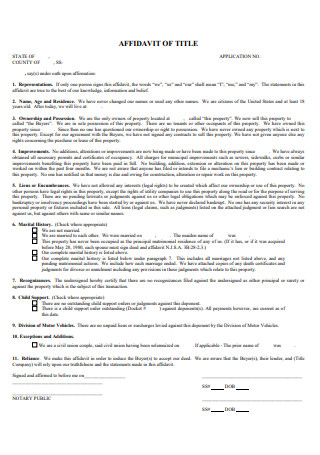
Affidavit of Title Template
download now -
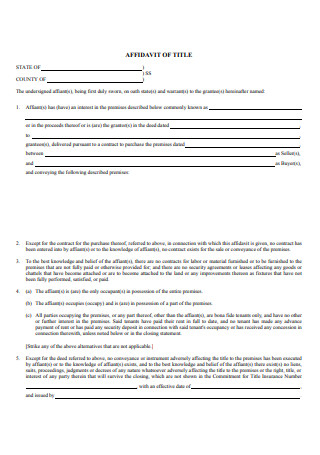
Sample Affidavit of Title
download now -
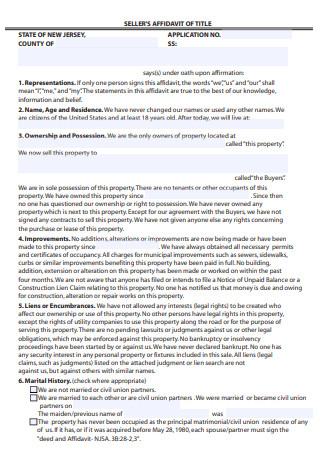
Seller Affidavit of Title
download now -

Basic Affidavit of Title
download now -

General Title Affidavit
download now -
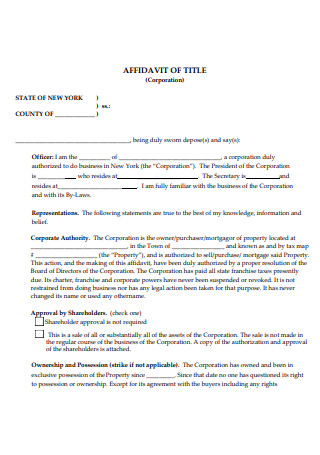
Corporation Affidavit of Title
download now -
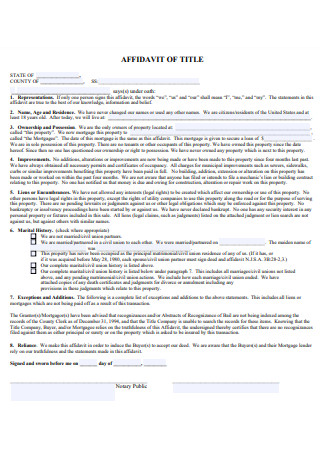
Formal Affidavit of Title
download now -

Corporate Affidavit of Title
download now -
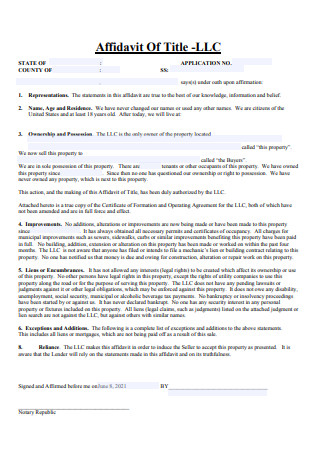
LLC Affidavit of Title
download now -
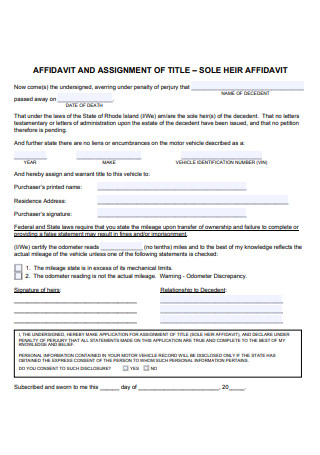
Affidavit and Assignment of Title
download now -

Affidavit of Title in PDF
download now -
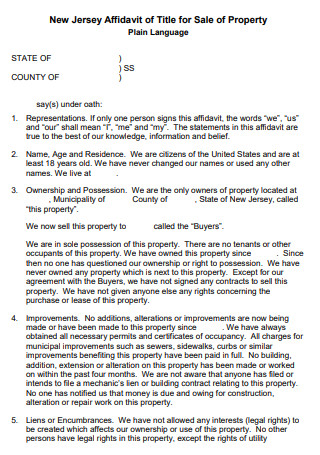
Affidavit of Title for Sale of Property
download now -

Printable Affidavit of Title
download now -
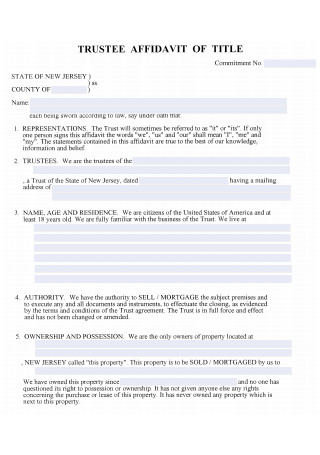
Trustee Affidavit of Title
download now -

Mortgage Property Affidavit of Title
download now -
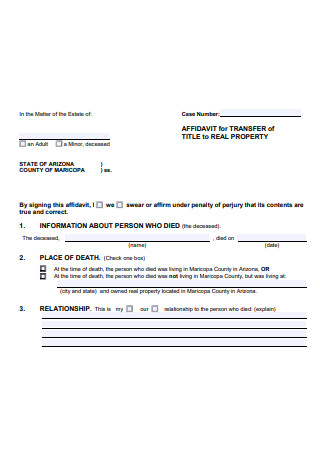
Affidavit For Transfer of Title to Real Property
download now -
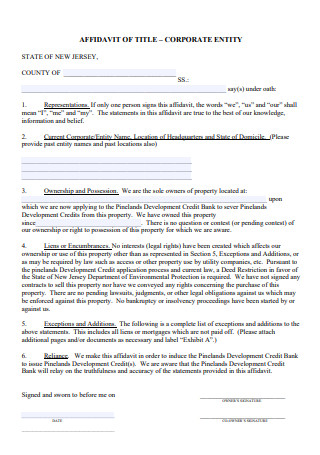
Corporate Entity Affidavit of Title
download now -
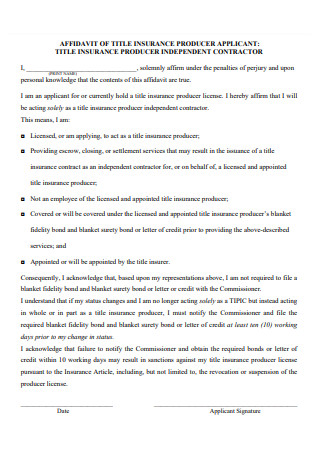
Affidavit of Title Insurance Producer
download now -
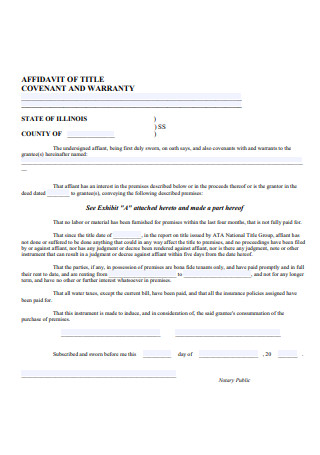
Affidavit of Title Example
download now -
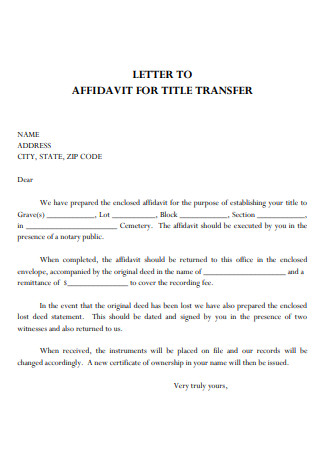
Letter to Affidavit For Title Transfer
download now -
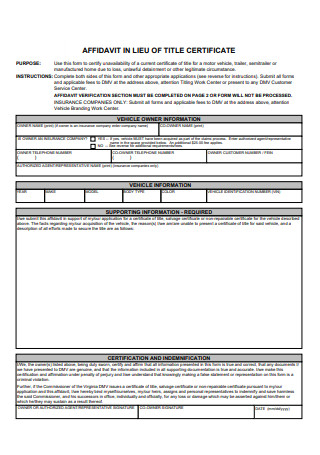
Affidavit Title Certificate
download now -
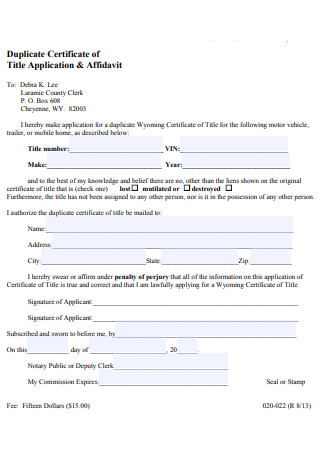
Duplicate Certificate of Title Application and Affidavit
download now -
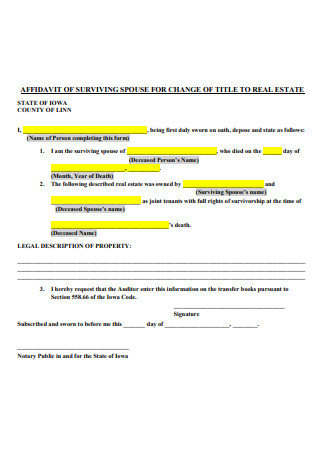
Affidavit of Change of Title
download now -
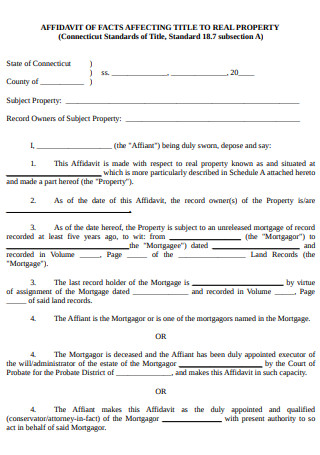
Affidavit of Affecting Title to Real Property
download now -
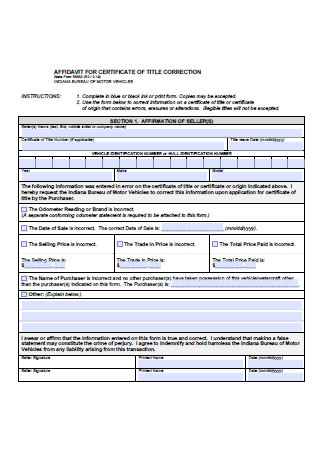
Affidavit For Certificate of Title Correction
download now -
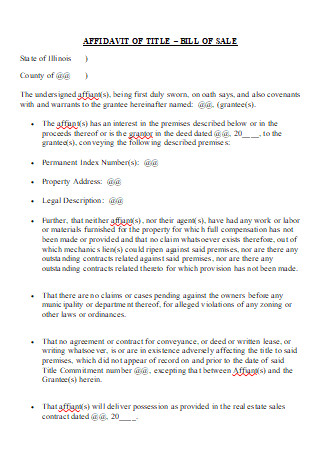
Bill of Sale Affidavit of Title
download now -

Simple Affidavit Title
download now -

Affidavit of Title Format
download now -
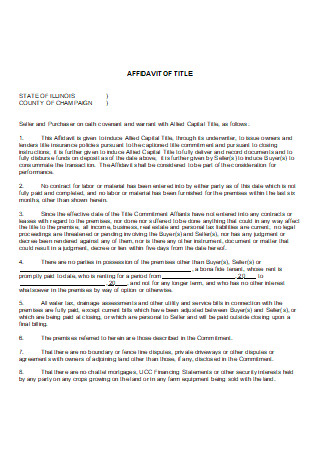
Affidavit of Title in DOC
download now
FREE Affidavit of Title s to Download
28+ Sample Affidavit of Title
What Is an Affidavit of Title?
How To Create an Affidavit of Title?
FAQs:
I am interested in buying a property, but the owner is refusing to sign an affidavit of title. Should I be worried?
How does a lienholder release a lien?
How would I be able to get a mechanics lien off the title if I’ve already paid?
Does an Affidavit of Title only refer to real estate properties?
In simpler words, an Affidavit of Title is a legal proof that a seller owns a property and has the right to sell it to another person. For example, if you own a property and there is a need to prove the title of that property then an Affidavit of Title can become handy in these situations, or maybe if you’re selling something valuable such as like a house or a beachfront lot and if the buyer will be asking for a proof of ownership of the property, an affidavit of title can help you the seller of the real estate to dispel reservations make the sale as soon as possible. This will also help indicate that the property is not being sold to another party, and that there are no liens or unpaid taxes against the property, and that the seller of the property is not in bankruptcy proceedings.
What Is an Affidavit of Title?
An Affidavit of Title is a legal document that is made by a seller and is designed to protect the buyer of some type of property. The property may include any of the following homes, including a townhouse or condominium. It may be a cottage or vacation home property, or either a piece of land with or without buildings in it. An affidavit of title does not distinguish these types of property. It also explicitly states the status of potential legal issues involving the property or the seller. In simpler words, the Affidavit of Title is a proof that whoever sells the property the property is secured with a title.
This also attest that certain other information about the property are correct and true which is sworn to by the seller and is duly notarized by a lawyer. Most states and title companies actually require affidavits of title in real estate transactions in order to protect their real estate company, the seller, the buyer and the property. If you are wondering as how does an affidavit of title protect the buyer from any legal issues, then the answer is if an issue arises at a later date most especially after the transaction, and when the buyer has already the possession of the physical document that clearly states the sworn statement of the seller-this can be used in court and a legal action can be taken to this. Sometimes an Affidavit of Title is also referred to as a General Title Affidavit or Seller’s Affidavit as this affidavit may contain additional information about the property.
4 Types of Property Liens
A “lien” is a claim a creditor has either acquired or that has been granted by the owner of the property. A lien won’t actually prevent a sale of the property but it just dictates who gets the money from the sale, and in what order. A title company or the attorney should ensure that the liens are paid off and the title is cleared and has no existing legal issues before passing the title to the new owner. There are also instances where a property is free of liens, this means that no one has a financial interest in the property except for the property holder. This assures the purchaser that the property owner is free to sell the property to anyone they choose, without any obligation to others and this is called an absence of property liens. So what are the 4 types of property liens? Read down below to know more about the property liens:
How To Create an Affidavit of Title?
As stated above, an affidavit of title is a sworn statement or declaration of the property. This is created by the home sellers or homeowners that will help attest that the property is correct, true and ensure that the condition of the property title is okay. Usually, it is a request made by title companies to issue title insurance, or sometimes if the homeowner or seller is interested to transfer the title to the new owner, an Affidavit of Title is used. There are also instances wherein an Affidavit of Title is used to ensure that the property is owned by the owner to sell and they are not interested in selling it to anyone else. Creating an affidavit of title should never be that hard and hassle for your part, that’s why here are some tips for you to be able to write your own affidavit of title:
1. Ready the following correct and accurate details for your Affidavit of Title:
- Full legal name of the affiant
- Date of birth of the affiant
- Address of the affiant
- Identify details of the property that is being asked to create an Affidavit of Title including the state, county and address
- When the title was acquired
- Improvements that were made of the property
- Indicate any liens or encumbrances against the property
- Indicate any possible lawsuits or judgements against the property
- Indicate if there any tax warrants or tax liens against the property
- Indicate if there are any other legal obligations regarding the property
- If there are any adverse claims that have been made against the property
- Check if there are any easements
- Indicate whether the owner has ever declared bankruptcy
- If the property is being leased, indicate if there are any current tenants
- The signature and notarization
2. Specify the purpose of creating of an Affidavit of Title
In most cases, an affidavit of title is created for the sole purpose of selling the property. While there are real estate transactions that may require an affidavit from the property owner attesting to their ownership and possession of the property. The affidavit of Title can be used for the following purposes:
- Someone requested for a formal declaration of ownership and possession of a property
- An assurance that the owner is really the rightful owner of the property
- Ensuring that the property has no current legal issues, liens, encumbrances, taxes or easements.
3. What should be included in writing an Affidavit of Title?
An affidavit of title first includes some language that will declare the signer is swearing or affirming to the facts that are listed. Afterwards, it should include the following information:
- Identification of the seller as the sole owner of the property
- Lists of the previous names the owner may have gone through in the 10 years prior to the signing of the affidavit
- States there are not any liens, including: Federal tax liens, state tax liens, municipal liens, mechanics liens or other judgements.
- If ever they are liens, the seller should identify them and include the details of the liens that exist.
- If there are easements on the property, these should also be detailed
- Affirms that there are no bankruptcy proceedings
4. Introduce the affiant and write a statement of truth
The affidavit of title must identify who the Affiant is since the affiant is the one who is responsible for writing the affidavit. The owner of the property is the only person who is and ever allowed to make an affidavit of property that they own. So in this scenario, the affiant should be the owner and the seller of the property. Affiants should identify themselves with verifiable information such as their full legal name, date of birth, current address or social security number. A statement of truth should also be written to swear under oath that all facts presented and written in the affidavit are nothing but the truth.
5. Review your affidavit and take it for notary signing
Once you’re done writing your affidavit, you need to double check and review all the details that you have indicated and check if there are any errors that you can still correct. If there are mistakes after you submit your affidavit of title, this may result in misrepresentation and falsification of the information as this is a sworn statement. After you review it and if everything is good to go, you can now bring it with you to the notary public or any officers of court who can administer an oath. Make sure that your document is not yet signed as this needs to be signed in their presence. In this way, they can verify and attest to your identity. Once the notary already signed the document, it is now legal and admissible in court.
FAQs:
I am interested in buying a property, but the owner is refusing to sign an affidavit of title. Should I be worried?
If a person refuses to sign an affidavit of title, well, there are several things that you be concern of, and listed below are the following:
- The person does not own property
- The person owns the property with another person who doesn’t want to sell or doesn’t even know that the property is a proposed sale
- There may be lies on the property
- The person is not authorized to sell the property for some reasons
How does a lienholder release a lien?
A lienholder releases a lien by filling a form called a release of lien on real property, notarizing it and recording the document at the county recorder’s office.
How would I be able to get a mechanics lien off the title if I’ve already paid?
In an instance wherein you have completed the payment, there should not be a lien on your property. You have to obtain the proof if you have already billed and sent it, with a letter, to the lienholder. You have to ask them to remove the lien. There are times that this is probably just an oversight on the contractor’s part and missed the payment that you have made. However, if they refuse to lift the lien, you can file a lawsuit to “quiet title”
Does an Affidavit of Title only refer to real estate properties?
Most of the affidavits of titles are for selling real estate properties, but actually it isn’t the only property that can be covered in this document. This can include assets such as a boat, car, stocks and bond certificates that can be used by this type of affidavit in order to attest the ownership of the possession of these items.
An affidavit of title contains a sworn statement that the owner and seller of a property holds the property’s title. This is a legal proof of ownership in order to sell it. In case that you are having a hard time creating one or there are problems or discrepancies that may come along the way when creating this affidavit, do not hesitate to contact your lawyer.
